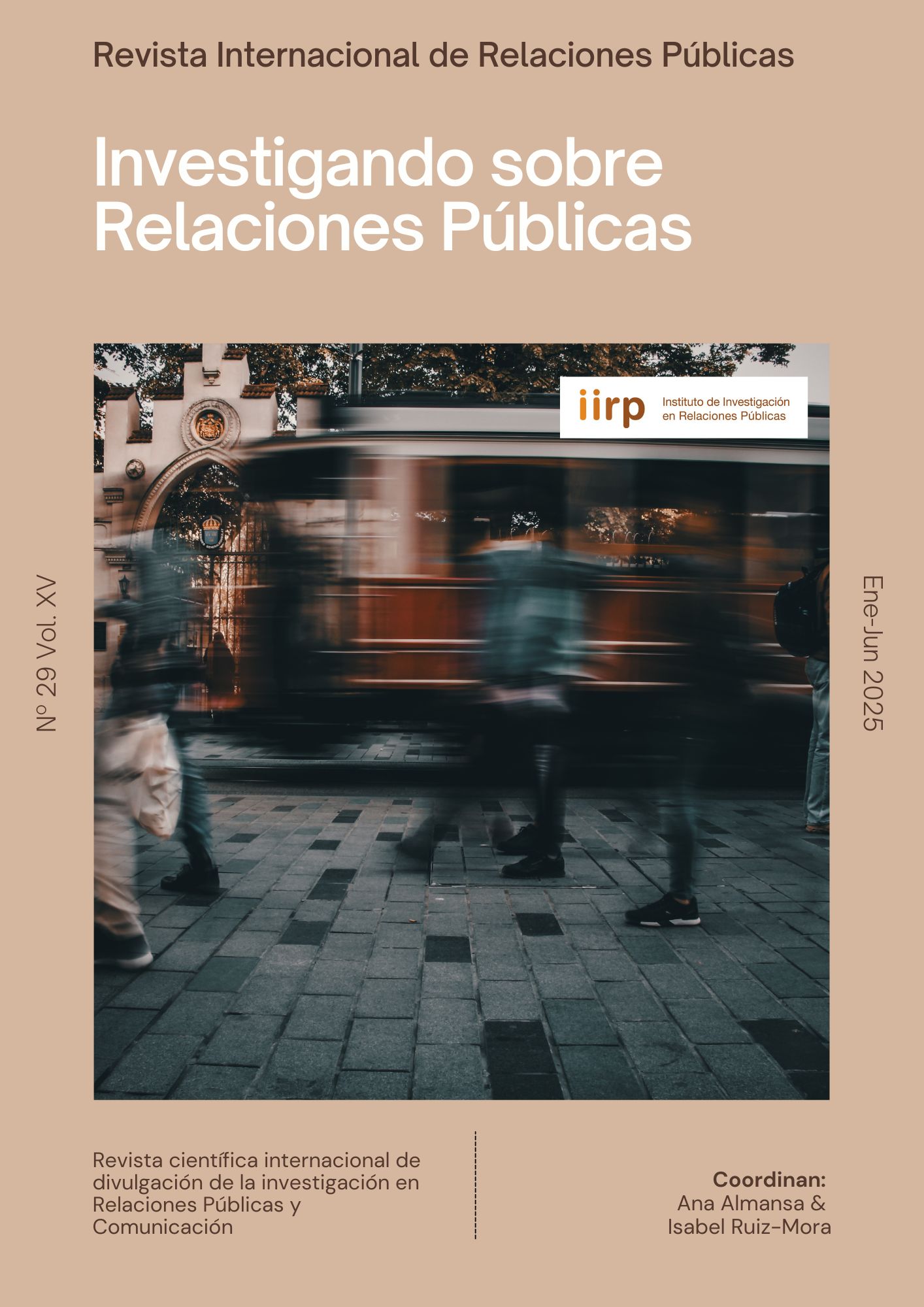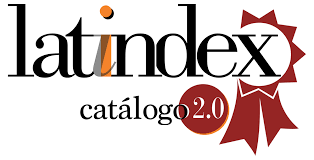Gender inequalities in the career paths of women public relations professionals
DOI:
https://doi.org/10.5783/revrrpp.v15i29.885Keywords:
Public Relations, women, inequality , intersectionality, genderAbstract
This article reflects on the gender inequality still present in Brazilian organizations and highlight the participation of women in Public Relations. The experiences of female PR professionals are very similar in different parts of the world, despite the fact that they work in countries with different political, social and economic characteristics. It is possible that this is due to the presence of patriarchy in Western culture, which reorganizes the superiority and inferiority of social relations for each sex. As a result, the domination of women is manifested through social institutions, discourse, knowledge creation and discipline (Foucault, 1982). The theoretical framework brings the critical perspective of Public Relations (L’Etang, 2009; Holtzhausen, 2012; Yeomans, 2020; Topić, M, 2020; Adi & Ayme-Yahil, 2020); Aktaş, M, 2020) the intersectional approach (Brah, 2006; González, 2019) and decolonial feminism (Carneiro, 2019; Lugones, 2020; Curiel, 2020). The results of the study revealed that in Brazil, gender is articulated differently with class and race markers (Brah, 2006) mainly due to “Brazilian-style” racism (Gonzalez, 2019). It is possible to allude that there is a very sophisticated racial democracy in the country that keeps blacks and indigenous people in the most exploited class, as revealed by the social indicators published by the Brazilian Institute of Geography and Statistics (IBGE, 2024). This social reality is reflected in participant accounts, with different social markers that interrelate and generate specific conditions for access to education and work. The fact that Erin and Pina are black and brown and from lower social classes, resulted in the fact that access to education was more difficult, since both had to work after finishing high school in order to pay for their university studies. The economic condition of Maria and Vitória's families was reflected in the acquisition of cultural capital (Bourdieu, 2015). This is highly valued trait in the Brazilian job market and is reflected mainly through the extent that the person has (for example) a command of a second language and knowledge of other cultures. Using a qualitative approach, the study drew on the accounts of four professional women with different social markers. The corresponding life stories were categorized and analyzed using the biographical-narrative methodology with a comprehensive interpretation. According to Bertaux (1999), this is a methodology and not simply a tool or technique that allows us “to get to know” the social through the individual. This is why the life stories are based on the experience of the individual, who does not have to be a particular or special person, but simply a person from the community being studied. Key results enabled us to observe that intersectional power relations had an impact on the trajectories of the four women who took part in the research study, since they were forced to develop different strategies to survive in a work environment marked by sexism and racism. Practices in organizations reproduce the racist patriarchal system (Gonzalez, 1988) that excludes women from decision-making spaces. In order to reach management positions, women are often forced to choose between starting a family or giving up this option in order to occupy a senior management position. This is due to the fact that gender stereotypes influence the construction of the image of women as incapable of taking on leadership responsibilities and maintaining a family. The difficulty in reconciling family and professional life persists due to the social belief that home care activities are exclusively for women, leaving women overburdened and having to cope alone with the obligations of both home and work. As Grunig, Toth and Hon (2001) point out, in order to overcome gender bias in society, it is necessary to raise the awareness of sexism, make room for women in private organizations, government or the third sector senior positions, promote legislation that supports working parents, combat sexual harassment and break down gender stereotypes. The findings of the study reveal that Public Relations professionals face prejudice and discrimination in organizations simply because they are women, regardless of their level of academic training or experience. This context, compared to their male colleagues. makes it difficult for women to achieve a balance between family and professional life and to occupy management positions.
Downloads
References
Adi, A., & Ayme-Yahil, E. (2020). Beyond feminization: Women in PR can be the key to a more diverse, ethical and inclusive PR. In A. Adi & E. Ayme-Yahil (Eds.), Women in PR: Research and opinions about the status, challenges and future of women working in PR/Communications (pp. 4–6). Quadriga University of Applied Sciences. https://www.quadriga-hochschule.com/app/uploads/2021/03/QHS_Women-in-PR_Adi-Ayme-Yahil_0.pdf
Aktaş, M. (2020). Women in public relations: Reflections from academic research. In A. Adi & E. Ayme-Yahil (Eds.), Women in PR: Research and opinions about the status, challenges and future of women working in PR/Communications (pp. 9–18). Quadriga University of Applied Sciences. https://www.quadriga-hochschule.com/app/uploads/2021/03/QHS_Women-in-PR_Adi-Ayme-Yahil_0.pdf
Bertaux, D. (1999). El enfoque biográfico: Su validez metodológica, sus potencialidades. Proposiciones, 29. (Trabajo original publicado en Cahiers Internationaux de Sociologie, 1980, LXIX, 197–225).
Bento, M. A. S. (2002). Psicologia social do racismo. Vozes.
Bento, C. (2022). Pacto da branquitude. Companhia das Letras.
Berth, J. (2019). Empoderamento. Pólen.
Boughey, J. (2020). Mind the gap: Female perceptions and narratives of women’s journeys in communications/PR. In A. Adi & E. Ayme-Yahil (Eds.), Women in PR: Research and opinions about the status, challenges and future of women working in PR/Communications (pp. 19–28). Quadriga University of Applied Sciences. https://www.quadriga-hochschule.com/app/uploads/2021/03/QHS_Women-in-PR_Adi-Ayme-Yahil_0.pdf
Brah, A. (2006). Diferença, diversidade, diferenciação. Cadernos Pagu, 26, 329–376. https://doi.org/10.1590/0104-83332006000200014
Carneiro, S. (2019). Enegrecer o feminismo: A situação da mulher negra na América Latina a partir de uma perspectiva de gênero. In H. B. Hollanda (Org.), Pensamento feminista: Conceitos fundamentais (pp. 312–321). Bazar do Tempo.
Cline, C. (1986). The velvet ghetto: The impact of the increasing number of women in public relations and business communication. IABC Foundation.
Curiel, O. (2020). Construindo metodologias feministas a partir do feminismo decolonial. In H. B. Hollanda (Org.), Pensamento feminista hoje: Perspectivas decoloniais (pp. 120–139). Bazar do Tempo.
Diaz, N. Q., & Wosniak, H. (2022). Economia do Cuidado: Reflexões para um Feminismo Decolonial. Revista X, 17(1), 322-340. https://revistas.ufpr.br/revistax/article/download/84402/45910
Escosteguy, A. C. (Org.). (2008). Comunicação e gênero: A aventura da pesquisa. EDIPUCRS.
Ferrari, M. A., Conrad, K. Q., & Ortega, S. M. R. (2023). Reflexões sobre relações interseccionais de poder nas trajetórias de mulheres relações-públicas no Brasil. Organicom, 20(1), 84–104. https://doi.org/10.11606/issn.2238-2593.organicom.2023.207469
Foucault, M. (1980). The history of sexuality: An introduction. Vintage Books.
Gonçalves, G. (2007). Ética das relações públicas: A falta de responsabilidade social nos códigos éticos de relações públicas. Biblioteca Online de Ciências da Comunicação, 1–29. https://doi.org/10.13140/2.1.2848.3840
Gonzalez, L. (2019). A categoria político-cultural da amefricanidade. In H. B. Hollanda (Org.), Pensamento feminista: Conceitos fundamentais (pp. 340–352). Bazar do Tempo.
Grunig, L. A., Toth, E. L., & Hon, L. C. (2000). Feminist values in public relations. Journal of Public Relations Research, 12(1), 49–68. https://doi.org/10.1207/S1532754XJPRR1201_4
Grunig, L. A., Toth, E. L., & Hon, L. C. (2001). Women in public relations: How gender influences practice. Guilford Press.
Hodgkin, S. (2008). Telling it all: A story of women’s social capital using a mixed methods approach. Journal of Mixed Methods Research, 2(4), 296–316. https://doi.org/10.1177/1558689808321641
Hollanda, H. B. (Org.). (2019). Pensamento feminista: Conceitos fundamentais. Bazar do Tempo.
Holtzhausen, D. R. (2012). Public relations as activism: Postmodern approaches to theory and practice. Routledge. https://doi.org/10.4324/9780203819098
Holtzhausen, D. R., & Voto, R. (2002). Resistance from the margins: The postmodern public relations practitioner as organizational activist. Journal of Public Relations Research, 14(1), 57–84. https://doi.org/10.1207/S1532754XJPRR1401_3
Instituto Brasileiro de Geografia e Estatística. (2018). Estatísticas de gênero: Indicadores sociais das mulheres no Brasil. https://www.ibge.gov.br/estatisticas/multidominio/genero/20163-estatisticas-de-genero-indicadores-sociais-das-mulheres-no-brasil.html
Instituto Brasileiro de Geografia e Estatística. (2019). Síntese de indicadores sociais: Uma análise das condições de vida da população brasileira. https://biblioteca.ibge.gov.br/visualizacao/livros/liv101678.pdf
Instituto Brasileiro de Geografia e Estatística. (2022). Censo demográfico 2022. https://censo2022.ibge.gov.br/panorama
Instituto Brasileiro de Geografia e Estatística. (2024). Estatísticas de gênero: Indicadores sociais das mulheres no Brasil (3a ed.).
Johns, M. L. (2013). Breaking the glass ceiling: Structural, cultural, and organizational barriers preventing women from achieving senior and executive positions. Perspectives in Health Information Management, 10(1), 1–11. https://www.ncbi.nlm.nih.gov/pmc/articles/PMC3544145/
Kuhn, T. (2007). A estrutura das revoluções científicas (9a ed.). Perspectiva.
L’Etang, J. (2009). Relaciones públicas: Conceptos, práctica y crítica. Editorial UOC.
Lugones, M. (2019). Rumo a um feminismo decolonial. In H. B. Hollanda (Org.), Pensamento feminista: Conceitos fundamentais (pp. 357–378). Bazar do Tempo.
Lugones, M. (2020). Colonialidade e gênero. In H. B. Hollanda (Org.), Pensamento feminista hoje: perspectivas decoloniais (pp.52-83). Bazar do Tempo.
Martino, L. M. S. (2018). Métodos de Pesquisa em Comunicação: projetos, ideias, práticas. Vozes.
Miguel, L. F., & Biroli, F. (2014). Feminismo e política: Uma introdução. Boitempo.
Morrison, A. M., White, R. P., & Velsor, E. V. (1987). Breaking the glass ceiling: Can women reach the top of America’s largest corporations? Addison-Wesley.
Movimento Mulher 360. (2016). MM360 explica os termos gaslighting, mansplaining, manterrupting e bropriating. https://movimentomulher360.com.br/artigos/mm360-explica-os-termos-gaslighting-mansplaining-manterrupting-e-bropriating/
Oréfice, Giovana (2024). LinkedIn no Brasil: 75 milhões de usuários e novas soluções. In Meio e Mensagem. Recuperado em https://www.meioemensagem.com.br/midia/linkedin-no-brasil
Ortega, S. M. R. (2022). Desafios e percalços de mulheres no exercício profissional de relações públicas: Análise de histórias de vida para entender a desigualdade na profissão [Dissertação de mestrado, Universidade de São Paulo]. https://doi.org/10.11606/D.27.2022.tde-09062022-142949
Ramos, A., Barberá, E., & Sarrió, M. (2003). Mujeres directivas, espacio de poder y relaciones de género. Anuario de Psicología, 34(2), 267–278. https://revistes.ub.edu/index.php/Anuario-psicologia/article/view/8751
Santamarina, C., & Marinas, J. M. (1995). Historias de vida e historia oral. In J. M. Delgado & J. Gutiérrez (Eds.), Métodos y técnicas cualitativas de investigación en ciencias sociales (pp. 257–285). Síntesis.
Sriramesh, K., & Verčič, D. (2018). La relación entre cultura y relaciones públicas. In K. Sriramesh & D. Verčič (Eds.), Relaciones públicas globales: Teoría, investigación y práctica. Editorial UOC.
Teixeira, D. V. (2017). Comunicação organizacional e (in)sustentabilidade: Discurso, estratégias e efeitos de sentidos em anúncios impressos [Tese de doutorado, Universidade Federal do Rio Grande do Sul]. https://www.lume.ufrgs.br/handle/10183/156785
Thomas, R., Cooper, M., Cardazone, G., Urban, K., Bohrer, A., & Yee, L. (2021). Women in the workplace 2021. McKinsey & Company. https://www.mckinsey.com/featured-insights/diversity-and-inclusion/women-in-the-workplace
Topić, M. (2020). Women in public relations in England (Vol. 2, No. 1). EUPRERA.
Topić, M., & Lawson, D. A. (2019). Women in public relations: A literature review (1982–2019) (Vol. 1, No. 1). EUPRERA.
Toth, E. L., & Cline, C. G. (Eds.). (1989). Beyond the velvet ghetto. IABC Research Foundation.
Verčič, D., Grunig, L. A., & Grunig, J. E. (2001). On the definition of public relations: A European view. Public Relations Review, 27(4), 373–387. https://doi.org/10.1016/S0363-8111(01)00094-1
Vojvodic, A; Del Monde, I; Camargo, M; Yaredy, T. (2022). Diversidade e inclusão em empresas, governos e organizações (Série Universitária) (Portuguese Edition). Editora Senac.
Waddington, S. (2025). The missing women report. Chartered Institute of Public Relations. https://cipr.co.uk/CIPR/Our_work/Policy/Research_fund_reports.aspx
World Economic Forum. (2020). Global gender gap report 2020. https://www3.weforum.org/docs/WEF_GGGR_2020.pdf
Xifra, J. (2012). Public relations anthropologies: French theory, anthropology of morality and ethnographic practices. Public Relations Review, 38(4), 565–573. https://doi.org/10.1016/j.pubrev.2012.06.005
Yeomans, L. (2020). The ‘acceptable face of feminism’ in the UK public relations industry: Senior women’s discourse and performativity within the neoliberal PR firm. In A. Adi & E. Ayme-Yahil (Eds.), Women in PR: Research and opinions about the status, challenges and future of women working in PR/Communications (pp. 39–47). Quadriga University of Applied Sciences.
Downloads
Published
How to Cite
Issue
Section
License
Copyright (c) 2025 Sandra Ortega, Kalliandra Conrad, Maria Aparecida Ferrari

This work is licensed under a Creative Commons Attribution-NonCommercial-NoDerivatives 4.0 International License.
Authors publishing in this journal agree to the following terms:
a. Authors retain copyright and grant the journal the right to be the first publication of the work as licensed under a Creative Commons Attribution License that allows others to share the work with an acknowledgement of authorship of the work and initial publication in this journal.
b. Authors may separately enter into additional arrangements for non-exclusive distribution of the version of the work published in the journal (e.g., placing it in an institutional repository or publishing it in a book), with an acknowledgement of initial publication in this journal.
c. Authors are allowed and encouraged to disseminate their work electronically (e.g. in institutional repositories or on their own website) before and during the submission process, as it can lead to productive exchanges, as well as earlier and higher citation of published work (see The Effect of Open Access).





